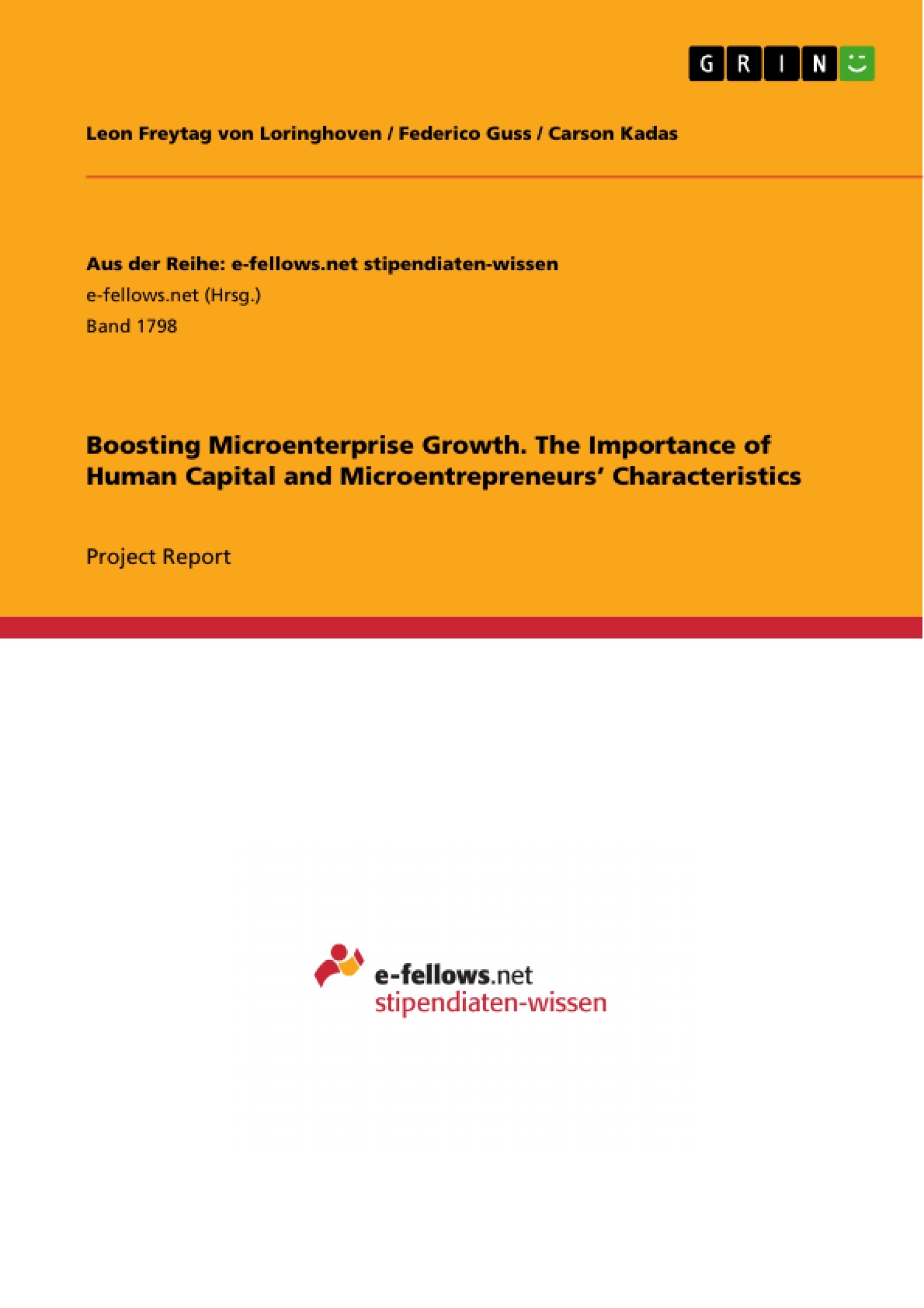Our study, despite general doubts, aims to deliver answers to how exactly growth of microenterprises is possible. Our proposed experiment combines different aspects of recent studies that found positive effects on growth. We thus want to set our study in the context of a larger, new strategy in development economics, proposed by Banerjee and Duflo in “Poor Economics”: “the accumulation of a set of small steps, each well thought out, carefully tested, and judiciously implemented”.
Through a global economic perspective, it is striking that some countries are very rich and some countries are very poor. In order for poor countries to catch up, their economies have to grow. This growth can be generated through foreign companies in developing countries or firms run by local elites.
However, these comprise the dangers of profits not staying in the country and of strengthening corrupt of oppressing elites. An alternative way lies in the generation of growth of very small enterprises. The incomes they generate are more likely to reach the poorer part of the population (e.g. by creating employment) or to be reinvested generating further growth than when money flows to local elites or abroad.
We thus see the generation of growth for microenterprises as crucial in terms of the economic development and alleviation of poverty in poor countries. However, we agree with Easterly, that it is wrong to ask “the question of what the end of poverty requires” (Easterly, 2006, p. 11). Instead, it is important to look at more concrete problems and find ways to solve them. We see growth of microenterprises as one of such problems, as it is inhibited by a number of constraints. Some researchers even raise “doubts that microenterprises can generate general economic growth” (Fiala, 2013).
Even the young, widely implemented phenomenon of microfinance has not changed much in terms of growth. In Poor Economics, Banerjee and Duflo write about microfinance: “”We cannot count on it to be a stepping-stone for larger business to be created”, and that this would be “the next big challenge for finance in developing countries” (Banerjee & Duflo, 2012).
Inhaltsverzeichnis (Table of Contents)
- INTRODUCTION
- LITERATURE REVIEW
- FINANCIAL CAPITAL
- HUMAN CAPITAL
- BEHAVIORAL CHARACTERISTICS
- EXPERIMENT DESIGN
- SAMPLE SELECTION
- BASELINE SURVEY
- TREATMENT
- FOLLOW UP SURVEYS
- MEASURING GROWTH
- DISCUSSION
Zielsetzung und Themenschwerpunkte (Objectives and Key Themes)
This study aims to investigate how growth of microenterprises is possible, particularly in the context of developing countries. The research focuses on combining different aspects of recent studies that have shown positive effects on growth. The study seeks to contribute to a larger, new strategy in development economics, which involves accumulating a set of small steps, each well-thought-out, carefully tested, and judiciously implemented.
- The role of financial capital in microenterprise growth
- The impact of human capital, specifically business training, on microenterprise performance
- The importance of behavioral characteristics and their interaction with different training approaches
- The effectiveness of different training methods, such as accounting training and rule-of-thumb heuristics training
- The potential for microenterprise growth to contribute to economic development and poverty alleviation
Zusammenfassung der Kapitel (Chapter Summaries)
The introduction provides context for the study by highlighting the importance of microenterprise growth in developing countries and outlining the research objectives. The literature review explores the existing research on financial capital, human capital, and behavioral characteristics in relation to microenterprise growth. It examines the limitations of traditional approaches and highlights the potential of combining different interventions to achieve positive results. The experiment design section details the methodology of the study, including sample selection, baseline surveys, treatment interventions, follow-up surveys, and growth measurement. The discussion chapter will analyze the findings of the study, exploring implications for policy and practice, as well as limitations and future research directions.
Schlüsselwörter (Keywords)
Microenterprise growth, developing countries, financial capital, human capital, business training, behavioral characteristics, accounting training, rule-of-thumb heuristics, economic development, poverty alleviation, microfinance.
- Quote paper
- Leon Freytag von Loringhoven (Author), Federico Guss (Author), Carson Kadas (Author), 2016, Boosting Microenterprise Growth. The Importance of Human Capital and Microentrepreneurs’ Characteristics, Munich, GRIN Verlag, https://www.grin.com/document/322338



